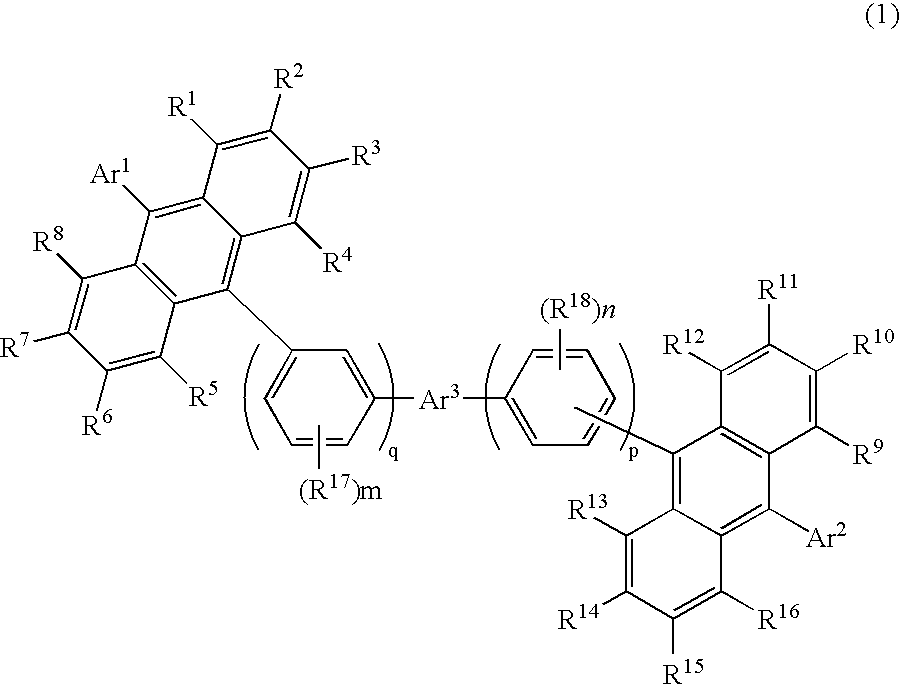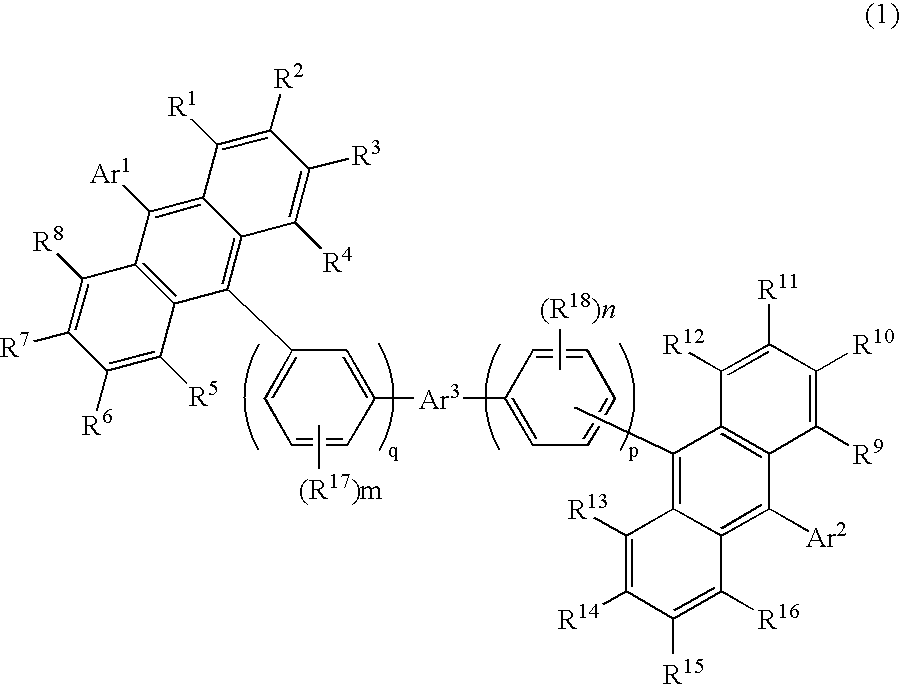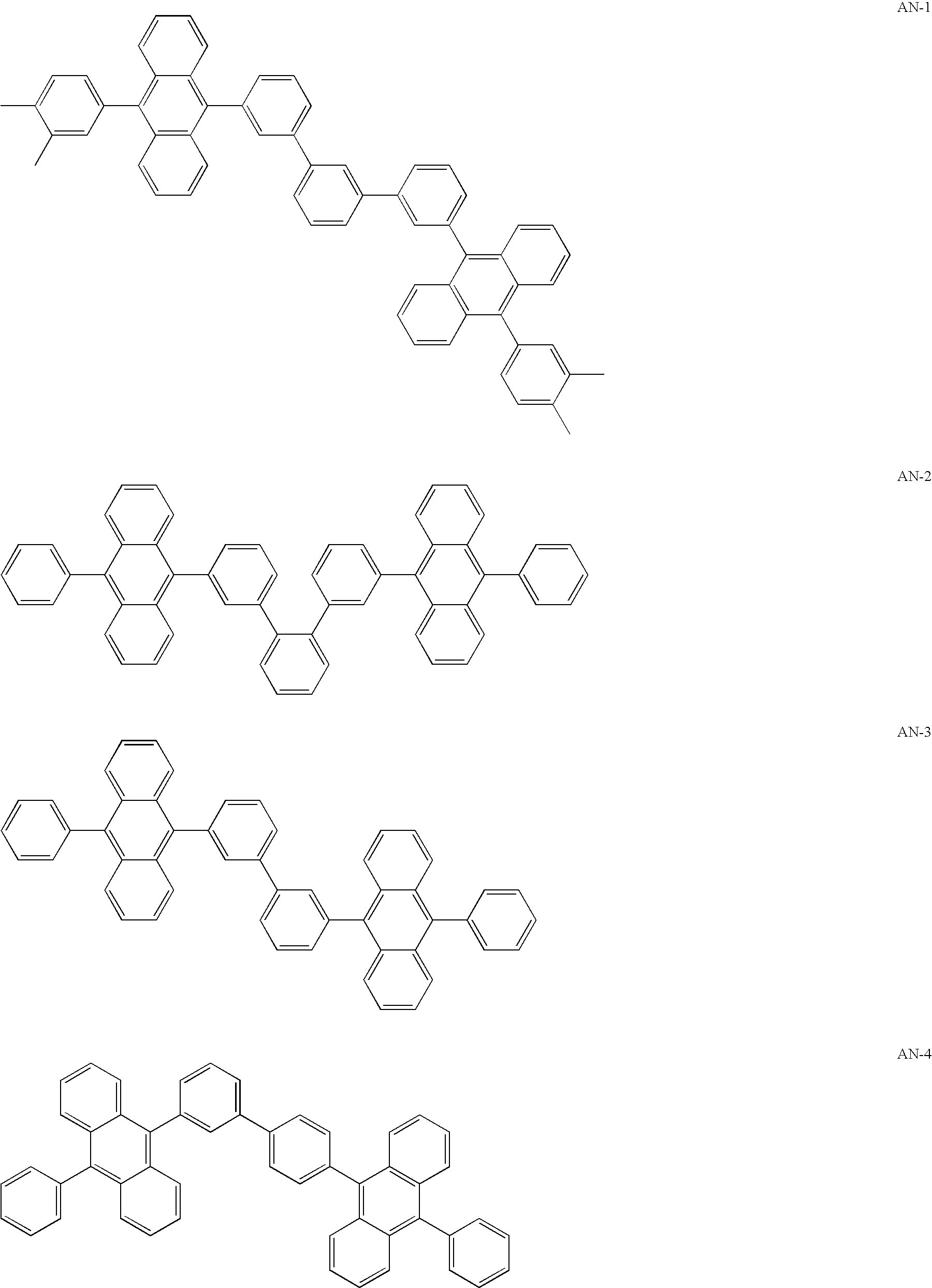Bisanthracene derivative and organic electroluminescence device using the same
- Summary
- Abstract
- Description
- Claims
- Application Information
AI Technical Summary
Benefits of technology
Problems solved by technology
Method used
Image
Examples
synthesis example 1
Synthesis of Compound AN-3
[0128] Commercial m-bromoiodobenzene in an amount of 28 g, 20 g of commercial 3-bromophenylboronic acid and 300 ml of toluene were mixed. To the resultant mixture, 5.7 g of tetrakis-triphenylphosphinepalladium and 200 ml of a 2M aqueous solution of sodium carbonate were added, and the reactor was purged with argon. The obtained mixture was heated under the refluxing condition for 6 hours, cooled by being left standing and subjected to extraction with toluene. The organic layer was washed with water and a saturated aqueous solution of sodium chloride and then dried with anhydrous sodium sulfate. After the solvent was removed by distillation using an evaporator, the residue was purified in accordance with the silica gel column chromatography (the solvent for development: hexane), and 21.9 g of 3,3′-dibromobiphenyl was obtained as a white solid substance (the yield: 71%).
[0129] 3,3′-Dibromobiphenyl obtained above in an amount of 6.2 g, 14.3 g of 10-phenylant...
synthesis example 2
Synthesis of Compound AN-4
[0131] Commercial p-iodoaniline in an amount of 12.5 g, 12.6 g of commercial 3-bromophenylboronic acid and 180 ml of toluene were mixed. To the resultant mixture, 2.0 g of tetrakistriphenylphosphinepalladium and 110 ml of a 2M aqueous solution of sodium carbonate were added, and the reactor was purged with argon. The obtained mixture was heated under the refluxing condition for 8 hours, cooled by being left standing and subjected to extraction with toluene. The organic layer was washed with water and a saturated aqueous solution of sodium chloride and then dried with anhydrous sodium sulfate. After the solvent was removed by distillation using an evaporator, the residue was purified in accordance with the silica gel column chromatography (the solvent for development: ethyl acetate / hexane=1 / 4), and 7.9 g of 4-(3-bromophenyl)aniline was obtained as a brown solid substance (the yield: 56%).
[0132] Water in an amount of 20 ml and 30 ml of a concentrated hydroc...
synthesis example 3
Synthesis of Compound A-6
[0135] In accordance with the same procedures as those conducted in Synthesis Example 1 except that 10-(naphthalen-2-yl)anthracen-9-boronic acid was used in place of 10-phenylanthracene-9-boronic acid, the object compound (Compound AN-6) was obtained as a grayish yellow solid substance (the yield: 85%).
[0136] The obtained compound was examined in accordance with FD-MS. Since m / z=758 corresponding to C60H38=758, the obtained compound was identified to be Compound AN-6.
PUM
| Property | Measurement | Unit |
|---|---|---|
| Time | aaaaa | aaaaa |
| Time | aaaaa | aaaaa |
| Time | aaaaa | aaaaa |
Abstract
Description
Claims
Application Information
 Login to View More
Login to View More - R&D
- Intellectual Property
- Life Sciences
- Materials
- Tech Scout
- Unparalleled Data Quality
- Higher Quality Content
- 60% Fewer Hallucinations
Browse by: Latest US Patents, China's latest patents, Technical Efficacy Thesaurus, Application Domain, Technology Topic, Popular Technical Reports.
© 2025 PatSnap. All rights reserved.Legal|Privacy policy|Modern Slavery Act Transparency Statement|Sitemap|About US| Contact US: help@patsnap.com



